Want to buy a home sewing machine?
The technical jargon and specifications can be crazily overwhelming when it comes to choosing the best sewing machines.
Who knew sewing machines were such a complex feat of engineering?
But, no fear — if you’re stuck wondering what on earth feed dogs are, this guide is for you.
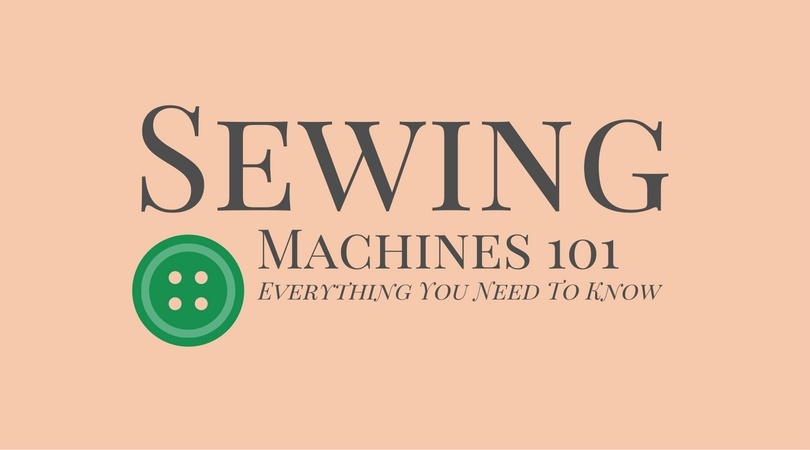
We’ll run you through absolutely everything you need to know about buying a sewing machine in 2017 — from needle types to stitches to the components of the machine itself.
It’s going to be a wild ride…
Remember to check out our Best Sewing Machines Guide if you’re looking to buy the best machine for your budget!
Inside a Sewing Machine
While sewing machines may look different on the outside, here’s what most resemble on the inside:
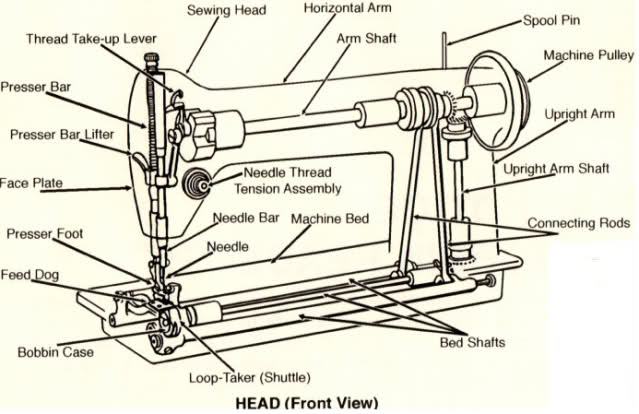
You’re probably thinking, “Wow: that’s a lot of components.”
You’d be right.
Thankfully, however, most modern sewing machines operate automatically in a seamless fashion, so you’ll have no need to be too well acquainted with the ins and outs of the inside of it.
See more: our guide to the parts of a sewing machine.
How do Sewing Machines Work?
Sewing machines join fabric together by stitching thread through the various layers, which acts to bind the fabric layers together.
You can also use sewing machines to embroider — decorating a single piece of fabric with decorative stitches.
After threading the needle, the machine will pierce the fabric with the needle, passing a loop of the thread through the piercing to the underside of the fabric. The mechanism below the fabric — called the bobbin or shuttle — will grab this thread loop, pulling it around another piece of thread in order to tightly secure the thread against the fabric.
This process repeats itself quickly as the needle, attached to the needle bar, is powered by a motor, which allows it to pierce fabric continuously in a quick and even fashion.
The sewer will hold the fabric tight and smooth to the machine by holding down the presser foot and will feed the machine more fabric as the needle pierces. There are different methods of feeding, which we’ll cover in a bit.
Exactly how the thread is stitched to the fabric depends on the stitch used. Most home sewing machines offer a wide array of stitches — both functional and decorative — but there are a few that are in most common use.
Types of Stitches
The Lockstitch
The Lockstitch is probably the most common stitch in your home sewing machine, and certainly the one beginners will use when they first start sewing.
Here’s a good gif which shows how it works:
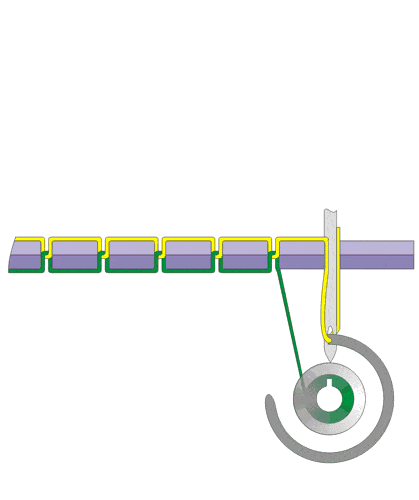
As you can see, the thread passed through the fabric from the needle is bound together to the fabric with another piece of thread from the bobbin.
The Chainstitch
The Chainstitch was the stitch used in the first mechanical sewing machines and, although less popular now, is still in use.
Here’s how it works:
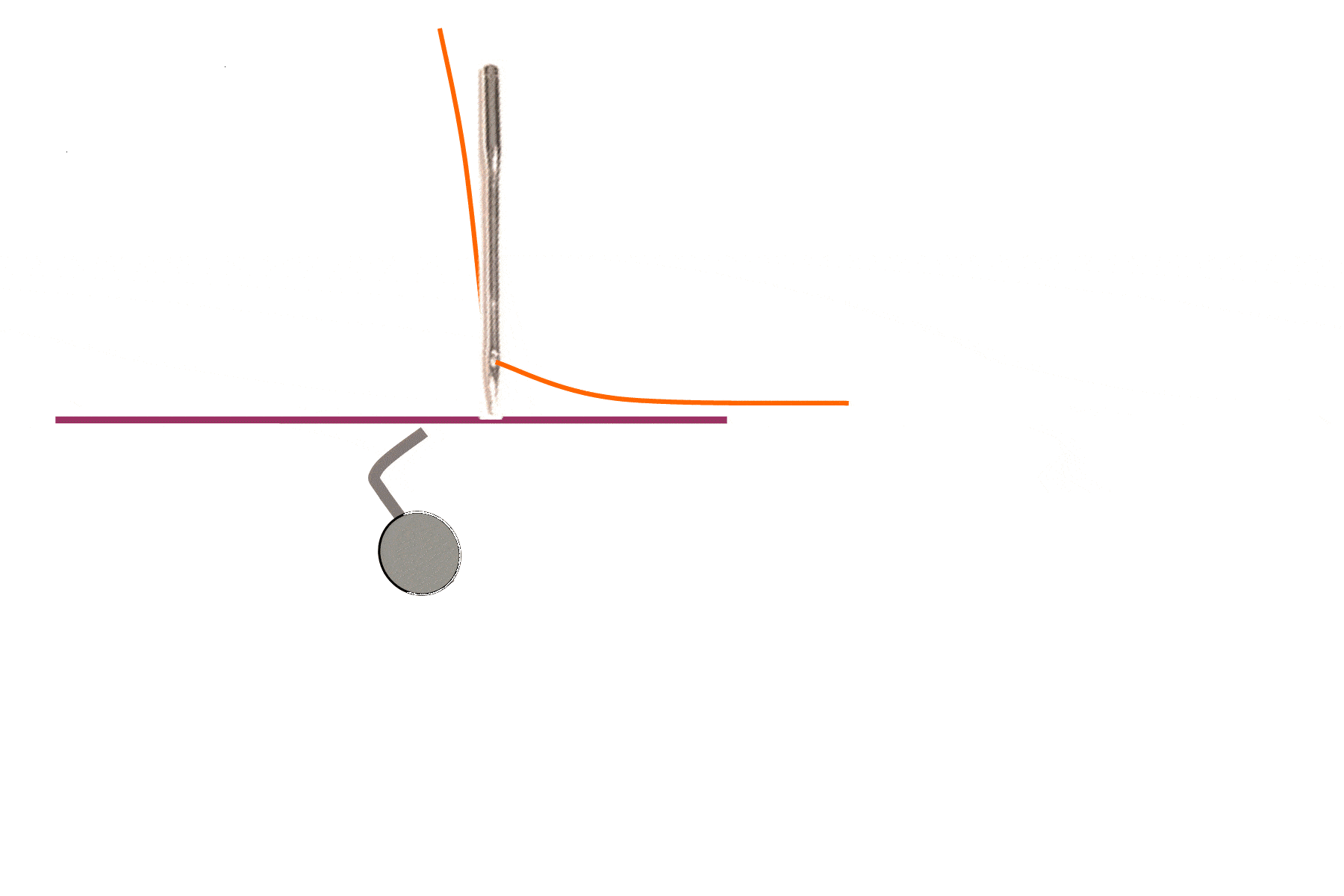
As you can tell, the chainstitch isn’t as secure as the lockstitch as it isn’t self-locking.
Garment makers often use this stitch in fashion design, being sure to secure it using it in combination with the overlock stitch (a combo known in the industry as a ‘safety stitch’).
The Overlock Stitch
Also known as the serger stitch, the overlock is used in serger sewing machines, which are typically used to put the finishing touches on garments (and add safety stitches), trim edges and protect seam edges from ravelling.
We don’t have a gif for the overlock, but here’s what it looks like once stitched:
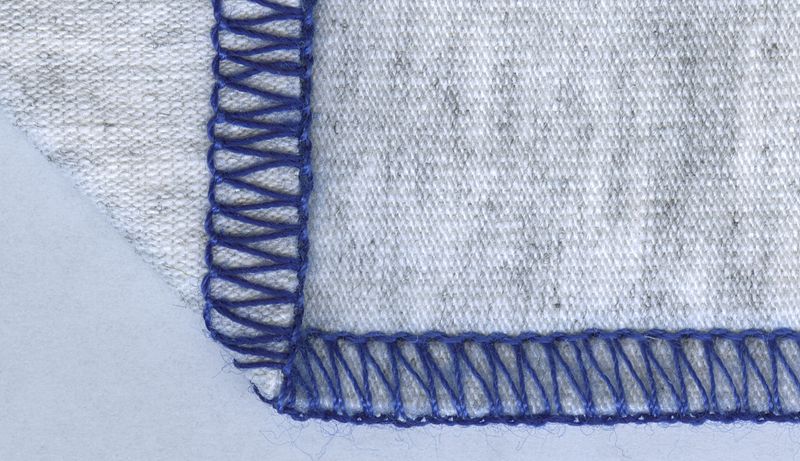
It’s stitched using between one and four threads (the picture above uses four), one or two needles and one or two loopers.
The Zigzag Stitch
As you might imagine, the zigzag stitch is a back and forth stitch typically used when a fabric requires more security than a normal straight stitch lockstitch can provide.
It’s actually just a directional variant on the lockstitch.
The Coverstitch
The Coverstitch is used for hemming, so is most popular with garment makers and fashion designers. There are specific coverstitch machines for this specialist purpose.
This stitch is usually formed by two or three needles and either one or two loopers. The looper below forms the bottom cover stitch on the back of the fabric, while the top looper simultaneously does the same on the top.
Types of Needle
As well as using different stitches for different purposes, there are also different needles for sewers to choose from too.
You should choose what sewing needle to use according to the fabric you’re going to sew.
Most good sewing machines come with a needle pack upon purchase, but you may need to purchase additional needles for specialist fabrics.
Here’s what a typical sewing machine needle looks like:
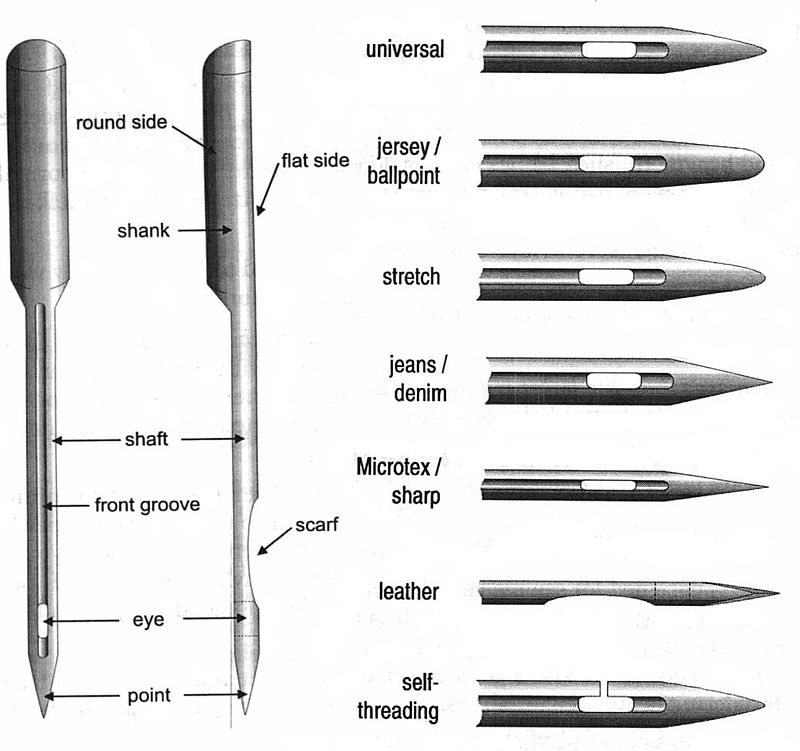
- Point: Where the needle pierces the fabric
- Eye: Where the thread is threaded through
- Scarf: A thin point which allows extra room for the bobbin/shuttle to pass
- Front Groove: A cut-out point that releases the thread into a loop shape before it’s grabbed by the bobbin/shuttle
- Shaft: The body of the needle that drives the point and eye through the fabric
- Shank: The top part, where it’s attached to the needle bar
Here are a few of the most popular types of needle in use in home sewing machines:
Universal Needle
– An all-purpose needle
– Not too sharp – the needle pushes through material, rather than piercing it
– Good for woven fabrics
Jersey/Ballpoint Needle
– A rounded tip to push through material rather than pierce
– Good for close knit and tightly woven fabrics
Stretch Needle
– Slightly rounded tip to prevent skipping
– For stretchy fabrics made of spandex
Jeans/Denim Needle
– Sharp point and small eye to penetrate thick material
Microtex/Sharp Needle
– Thin and sharp to cut through material
– Good for finely woven fabrics, applique and quilting
Leather Needle
– Point is triangular to cut a clean hole
Embroidery Needle
– Has a large eye to contain the embroidery thread
– Shaped so as to prevent shredding
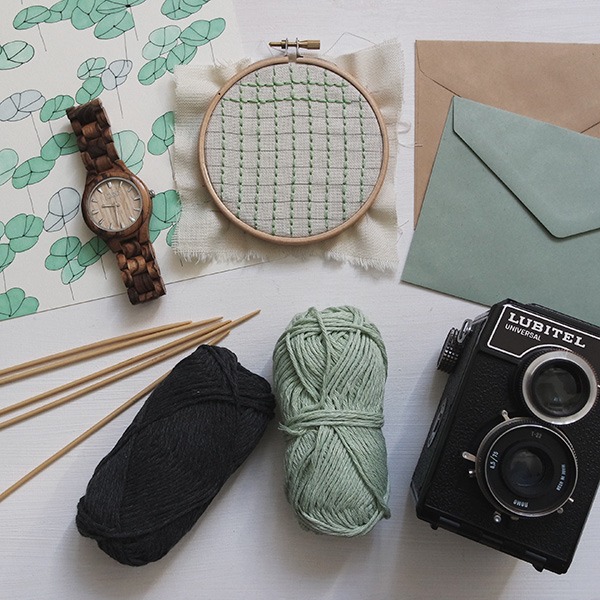
Metallic Needle
– Like the embroidery needle, but Teflon coated to deter shredding
Wing Needle
– Winged eye area to keep fabric open
– Good for hemming and decorative finishes
Quilting Needle
– Very strong with a tapered point to pierce multiple layers
– Specially crafted shaft and eye to avoid shredding of thread or fabrics
Serger Needle
– Designed for use in Serger machines, for the overlock stitch
Twin/Trio Needles
– Multiple needles on single shaft
– For decorative stitches
– For use with a machine with twin needle capability
Feeding a Sewing Machine
One thing to remember about using a home sewing machine is that the needle can only work in one place — it can’t travel up and down the length of your fabric for you.
That means that you have to move the material up and down the machine. We call this movement ‘feeding’.
How you feed the machine depends upon the type of feed mechanism that your sewing machine sports.
Here are the different types of feed:
Drop Feed
This is the most common feed mechanism in the best sewing machines and is the easiest to use, for both total beginners and experienced sewers.
In a drop feed machine, the fabric is moved forward by the pulling motion of the feed dogs.
Feed dogs are simply metal bars found in the needle plate of the sewing machine. When the needle pierces the fabric and pulls back up, the feed dogs are engaged; pushing through their slots in the needle plate, gripping the fabric and pulling it forward.
They retreat back down through the slots to their original position when the needle re-pierces the fabric, and so the mechanism continues.
The sewer makes sure that the fabric stays in contact with the feed dogs by holding down the presser feet.
Differential Feed
The differential feed is just like the drop feed above, except that the feed dogs are situated both before and after the needle.
This allows the material to be stretched and compressed at will — great for stretchy fabrics containing spandex.
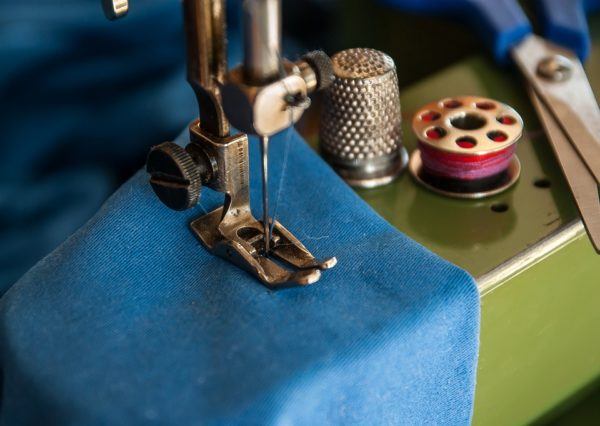
Free Motion Sewing
Most sewing machines will allow you to do ‘free motion sewing’ — where you move the fabric as you see fit, without the constraints of a feed mechanism.
You will need to disengage the feed dogs for free motion sewing.
This can be a little tricky to get right and to ensure that your stitches are still evenly spaced, but experienced sewers like the range of creative freedom this gives them.
Puller Feed
Generally restricted to more professional machines — and only those using straight seamed fabric — a puller feed grips the fabric and pulls the material forward by force in time with the machine.
Puller feeds are very reliable at producing straight and even stitching.
Walking Foot
A walking foot is not a feed mechanism in itself, but is used in conjunction with any of the feed mechanisms mentioned above.
A type of presser foot, the walking foot moves with the feed mechanism, pulling the material as it goes while keeping it flat against the needle plate.
It’s particularly useful for thicker fabrics and multiple layers.
Types of Sewing Machine
As you might imagine with all these different options available, there are a huge number of different types of sewing machine available.
For most people, the best sewing machines for home use will be the all-rounder machines that can do most stitches and handle most materials well. Others will prefer specialist quilting machines or serging machines.
Some of these machine types will overlap too.
Here’s a few of the different types of sewing machine available:
- All-Rounder: General purpose, good for home use
- Quilting and Embroidery: A specialist machine for crafters
- Serger/Overlock: For professional finishes, used by fashion designers and garment makers
- Coverstitch: For hemming, again used by fashion designers and garment makers
- Computerized: A machine with an LCD screen for stitch selection and other settings
- Mechanical: A machine whereby you choose settings via a mechanic dial
- Lockstitch: Just uses the single needle lockstitch, good for fashion designers, tailors and quilters
- Heavy Duty: A sturdy machine designed for heavy materials and lots of layers
Sewing Machine Features
When it comes down to choosing a sewing machine to buy, your first port of call should be our guide to the best sewing machines.
But there are a few things you should consider first before you take the plunge and make a purchase.
Beginners, you should pay particular attention to questions 4, 5, 6, 7, 8, 9, 11, 15 and 18.
- How many stitch patterns does it have pre-programmed?
- For garment makers, how many buttonholes does it have built in? How many steps does it take to create a buttonhole?
- What’s the maximum stitch length and width available? Can you adjust the size?
- How fast can it stitch? Can you manually adjust the speed?
- Is it computerized or mechanic?
- Is there an automatic thread needler?
- Is there an automatic thread cutter?
- Is there automatic tension control?
- Is there an automatic bobbin winder?
- What’s the feed mechanism?
- What accessories does it come with?
- Does it have twin needle capability?
- Can the feed dogs disengage for free motion sewing?
- How big is the throat (the working area)?
- Does it have a stop/start button?
- Does it have a free arm?
- How big is it? How much does it weigh?
- Does it have a warranty? What’s the customer support like?
Be sure to read our guide to the best sewing machines for beginners.
Best Sewing Machines: Brands
As you’ve no doubt discovered, there are a huge number of sewing machines on the market.
Like, ridiculously huge.
And, sadly, not all were created equal.
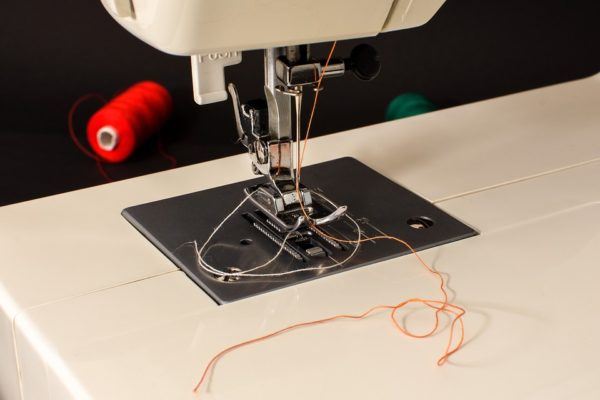
If you’re unsure of which machine to buy and don’t want to take too much of a risk, we’d advise that you stick to the well known brand names.
While some of their machines are better than some of their others, you can usually guarantee that you’re getting a standard of quality that’s not necessarily present in the less famous companies.
Of course, reading reviews should bring you up to speed on whether it’s the right model for you.
Here are the brand names to watch out for when you’re shopping for the best sewing machines:
Singer are perhaps the most well known name in the world of sewing machines, and are certainly a heritage brand, known as much for their antique and vintage machines as they are for their modern models.
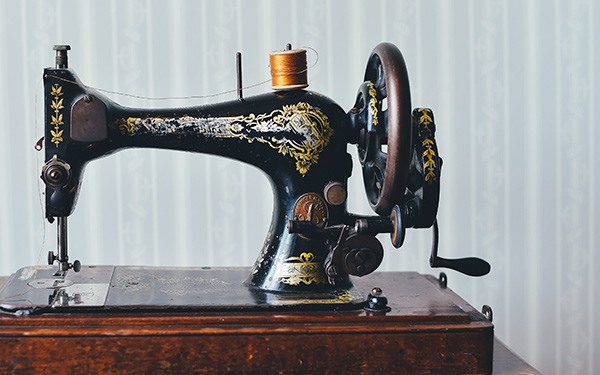
They have a huge number products on their roster, ranging from cheap all-rounders to more expensive specialist machines for serious hobbyists and small business owners.
Bernina are another heritage company, famed for their Swiss engineered sewing and embroidery machines.
It’s difficult to find their products on Amazon, but they do have an active website presence away from Amazon.
Is there anything that Brother can’t do?
As well as printers, vinyl cutting machines and various other household appliances, they also have a large range of very popular sewing machines, even having a line dedicated to popular TV show Project Runway. They acquired heritage company Jones Sewing Machine Co in 1968.
Like Singer, their machines are comparatively low cost and high quality, with plenty on offer for beginners up to advanced sewers. Ideal!
Janome is actually a Japanese company, totally dedicated to producing top of the range sewing machines.
Despite their Eastern origins, Janome products are incredibly popular in the US.
Juki is another top of the range Japanese firm, and is regarded as one of the leading machine manufacturers in the world.
As you might expect, their sewing machines are almost unparalleled for quality, and have the high price tags to match. As such, they’re best suited to only the most serious hobbyists and small business owners.
They produce some of the best specialist sewing machines on the market.
Finally, we have the Husqvarna Viking series – a collection of 24 very well reviewed machines that will appeal to beginners, intermediates and advanced sewers alike.
Phew! We think that’s everything you need to know about the home sewing machine — although don’t hesistate to ask us any questions in the comments below.
Class dismissed!
